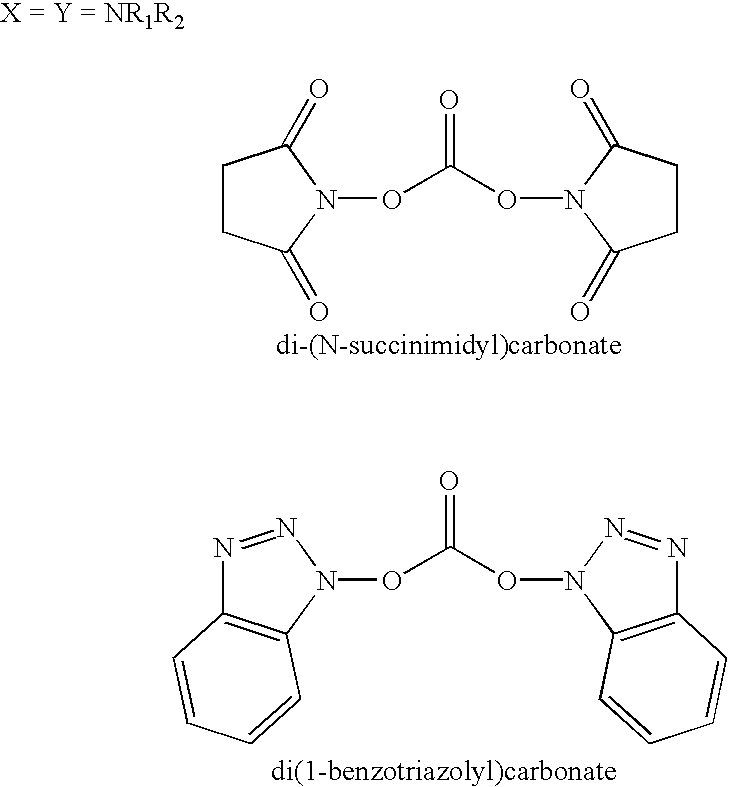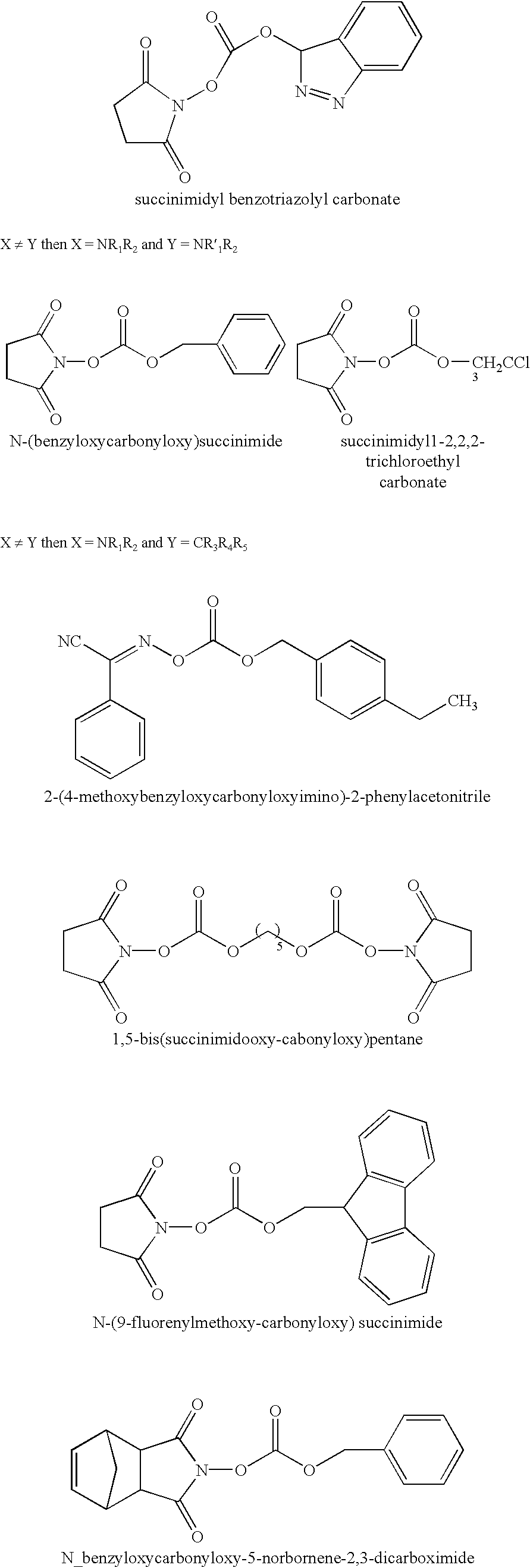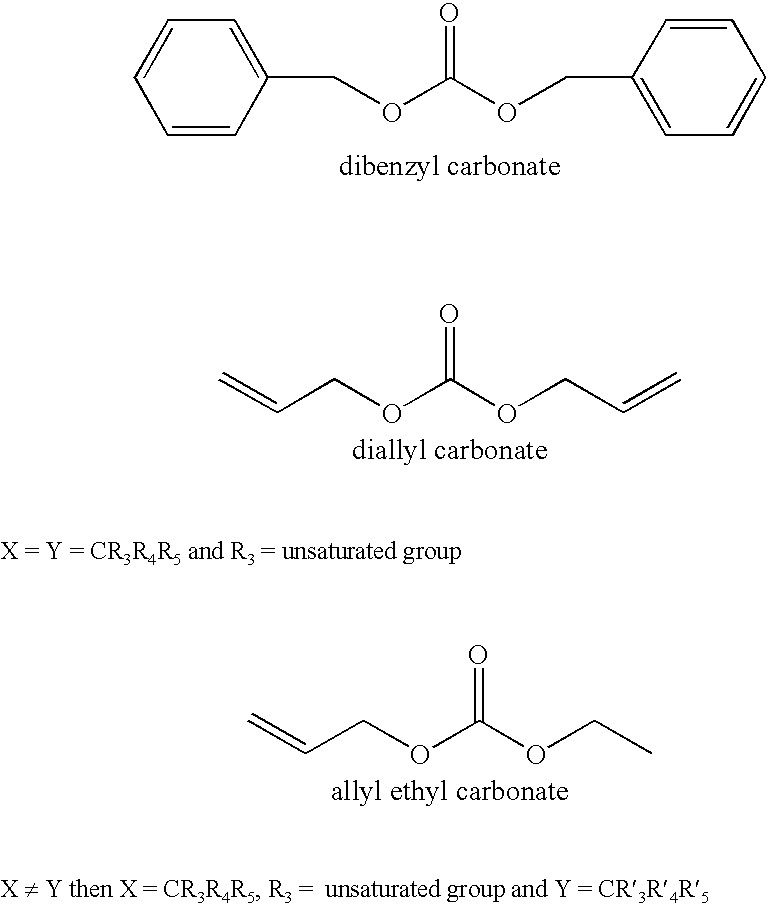Organic carbonate additives for nonaqueous electrolyte rechargeable electrochemical cells
a rechargeable electrochemical cell and organic carbonate technology, applied in the field of alkali metal electrochemical cells, can solve the problems of limited choice of electrolyte solvent systems, permanent capacity loss, and general cathode limitation of lithium ion cells
- Summary
- Abstract
- Description
- Claims
- Application Information
AI Technical Summary
Benefits of technology
Problems solved by technology
Method used
Image
Examples
example ii
[0044] After the initial cycle, the cycling of the twelve cells continued for a total of 10 times under the same cycling conditions as described in Example I. The discharge capacities and the capacity retention of each cycle are summarized in Table 3. The capacity retention is defined as the capacity percentage of each discharge cycle relative to that of the first cycle discharge capacity.
3TABLE 3 Cycling Discharge Capacity and Capacity Retention Group 1 Group 2 Reten- Reten- Group 3 Cycle Capacity tion Capacity tion Capacity Retention # (mAh) (%) (mAh) (%) (mAh) (%) 1 516.0 100.0 550.1 100.0 548.7 100.0 2 508.4 98.5 542.5 98.6 540.0 98.4 3 503.5 97.6 537.0 97.6 533.5 97.2 4 498.4 96.6 531.8 96.7 528.0 96.2 5 494.6 95.9 527.7 95.9 523.7 95.4 6 491.4 95.2 524.1 95.3 519.9 94.8 7 488.7 94.7 521.5 94.8 517.1 94.2 8 486.7 94.3 518.5 94.2 513.9 93.7 9 484.0 93.8 516.4 93.9 511.9 93.3 10 483.3 93.7 514.3 93.5 509.7 92.9
[0045] The data in Table 3 demonstrate that the group 2 and 3 cells wi...
example iii
[0046] After the above cycle testing described in Example II, the cells were charged according to the procedures described in Example I. Then, the cells were discharged under a 1000 mA constant current to 2.75 V then a five minute open circuit rest, followed by a 500 mA constant current discharge to 2.75 V then a five minute open circuit rest, followed by a 250 mA constant current discharge to 2.75 V then a five minute open circuit rest and, finally, followed by a 100 mA constant current discharge to 2.75 V then a five minute open circuit rest. The averaged total capacities under each discharge rate are summarized in Table 4 and the comparison of averaged discharge efficiency (defined as % capacity of a 100 mA constant current discharge) under the various constant currents is summarized in Table 5. In Table 4, the discharge capacities are cumulative from one discharge current to the next.
4TABLE 4 Discharge Capacities (mAh) under Various Currents Group 1000 mA 500 mA 250 mA 100 mA 1 ...
example iv
[0049] After the above discharge rate capability test, all the cells were fully charged according to the procedure described in Example I. The twelve test cells were then stored on open circuit voltage (OCV) at 37.degree. C. for two weeks. Finally, the cells were discharged and cycled eight more times. The % of self-discharge and the capacity retention were calculated and are shown in Table 6.
6TABLE 6 Rates of Self-Discharge and After Storage Capacity Retention Group Self-Discharge (%) Capacity Retention (%) 1 13.6 92.3 2 15.4 93.5 3 13.9 92.9
[0050] The data in Table 6 demonstrate that all three groups of cells exhibited similar self-discharge rates and similar after storage capacity retention rates. However, since the group 2 and 3 cells had higher discharge capacities than that of the group 1 cells, the capacities of the group 2 and 3 cells were still higher than that of the group 1 cells, even though they presented similar self-discharge and capacity retention rates. A total of 2...
PUM
| Property | Measurement | Unit |
|---|---|---|
| dissociation energy | aaaaa | aaaaa |
| temperature cycleability | aaaaa | aaaaa |
| temperatures | aaaaa | aaaaa |
Abstract
Description
Claims
Application Information
 Login to View More
Login to View More - R&D
- Intellectual Property
- Life Sciences
- Materials
- Tech Scout
- Unparalleled Data Quality
- Higher Quality Content
- 60% Fewer Hallucinations
Browse by: Latest US Patents, China's latest patents, Technical Efficacy Thesaurus, Application Domain, Technology Topic, Popular Technical Reports.
© 2025 PatSnap. All rights reserved.Legal|Privacy policy|Modern Slavery Act Transparency Statement|Sitemap|About US| Contact US: help@patsnap.com



